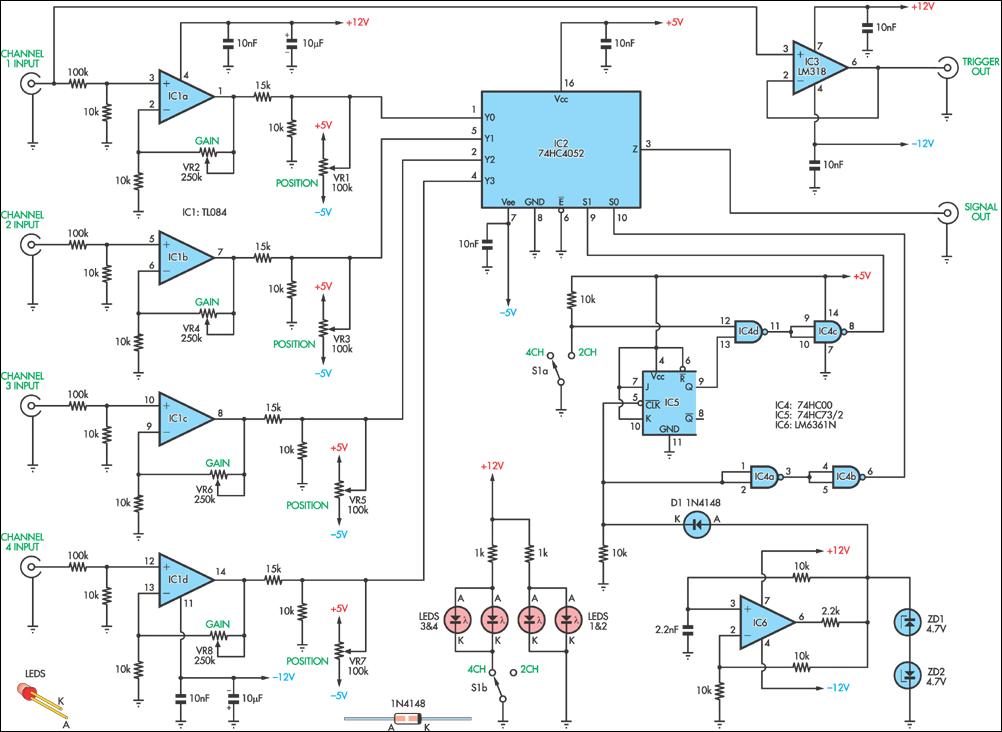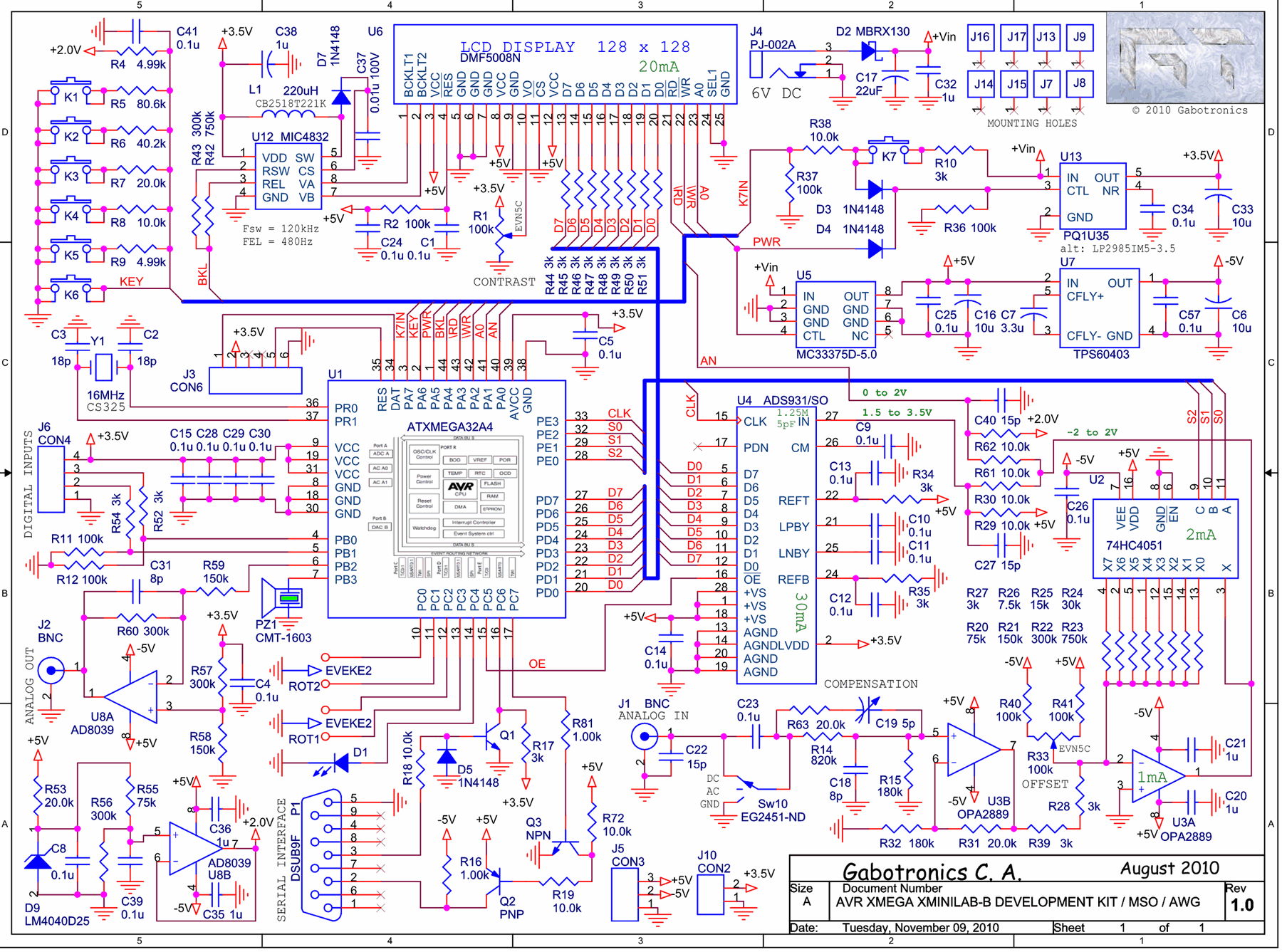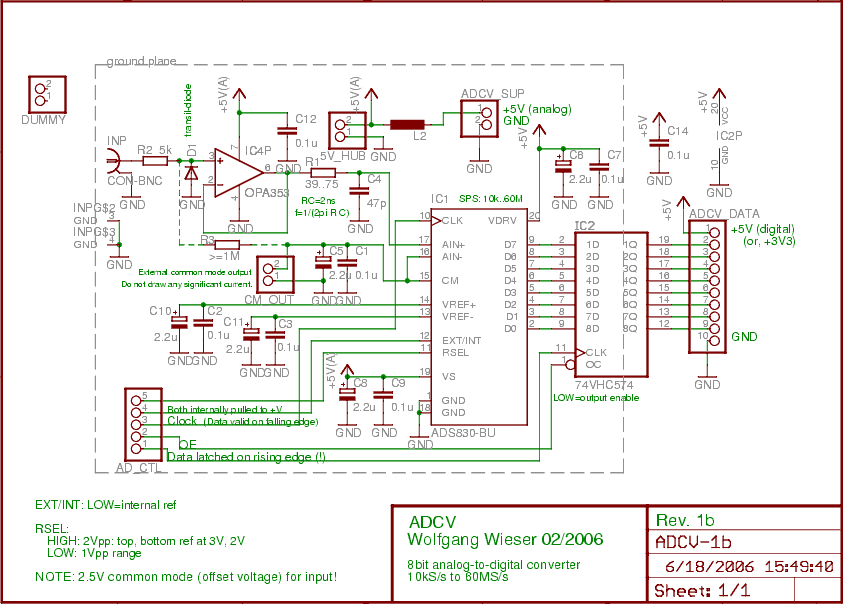
Four-Channel Oscilloscope Adaptor

This circuit allows the simultaneous display of four signals using a single channel of an oscilloscope. It effectively switches each of the inputs to the oscilloscope.
The circuit utilizes a multiplexer to manage the input signals. A typical configuration would involve a 4-to-1 multiplexer, which is capable of selecting one of four input signals based on the binary control signals provided to its select lines. The selected input is then routed to the output, which connects to the oscilloscope channel.
In this design, each of the four signal inputs is connected to the multiplexer. The selection of the input is controlled by a binary-coded decimal (BCD) input, which can be generated using a simple binary counter or manually controlled switches. When the control signals change, the multiplexer switches the selected input signal to the output, allowing the oscilloscope to display the chosen signal.
Additional components may include resistors to protect the inputs and ensure proper signal levels, as well as capacitors for signal conditioning if necessary. The circuit can be powered using a standard DC power supply, ensuring that all components operate within their specified voltage and current ratings.
Overall, this circuit design is efficient for displaying multiple signals with minimal hardware, making it a valuable tool for engineers and technicians who require the analysis of multiple signals without the need for multiple oscilloscope channels.This circuit enables you to display four signals simultaneously using only one channel of your oscilloscope. Essentially, it switches each of the inputs t.. 🔗 External reference
The circuit utilizes a multiplexer to manage the input signals. A typical configuration would involve a 4-to-1 multiplexer, which is capable of selecting one of four input signals based on the binary control signals provided to its select lines. The selected input is then routed to the output, which connects to the oscilloscope channel.
In this design, each of the four signal inputs is connected to the multiplexer. The selection of the input is controlled by a binary-coded decimal (BCD) input, which can be generated using a simple binary counter or manually controlled switches. When the control signals change, the multiplexer switches the selected input signal to the output, allowing the oscilloscope to display the chosen signal.
Additional components may include resistors to protect the inputs and ensure proper signal levels, as well as capacitors for signal conditioning if necessary. The circuit can be powered using a standard DC power supply, ensuring that all components operate within their specified voltage and current ratings.
Overall, this circuit design is efficient for displaying multiple signals with minimal hardware, making it a valuable tool for engineers and technicians who require the analysis of multiple signals without the need for multiple oscilloscope channels.This circuit enables you to display four signals simultaneously using only one channel of your oscilloscope. Essentially, it switches each of the inputs t.. 🔗 External reference





